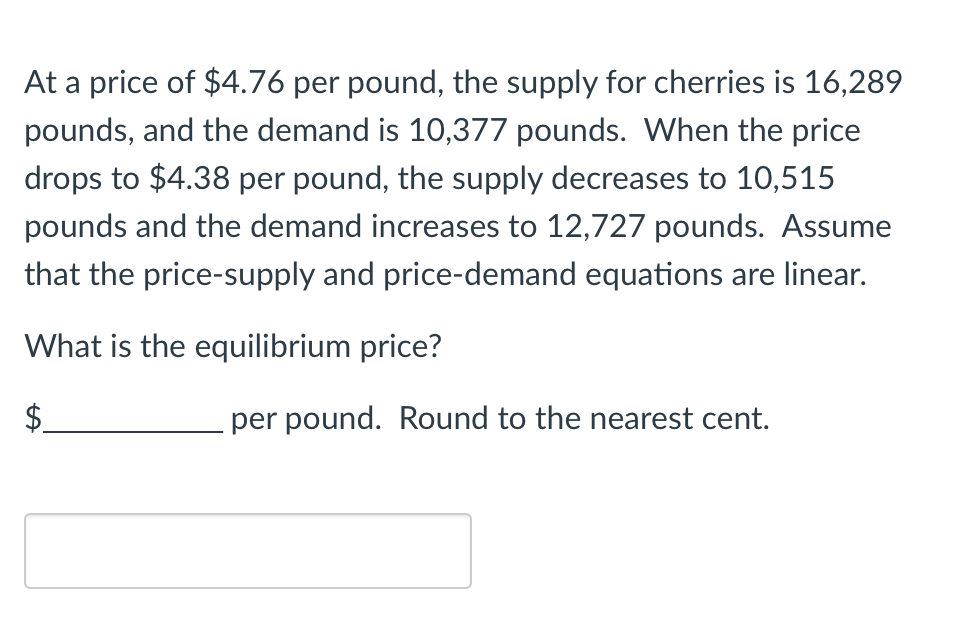At a price of $4.76 per pound, the supply for cherries is 16,289 pounds, and the demand is 10,377 pounds. When the price drops to $4.38 per pound, the supply decreases to 10,515 pounds and the demand increases to 12,727 pounds. Assume that the price-supply and price-demand equations are linear. What is the equilibrium price? $ per pound. Round to the nearest cent.
At a price of $4.76 per pound, the supply for cherries is 16,289 pounds, and the demand is 10,377 pounds. When the price drops to $4.38 per pound, the supply decreases to 10,515 pounds and the demand increases to 12,727 pounds. Assume that the price-supply and price-demand equations are linear. What is the equilibrium price? $ per pound. Round to the nearest cent.
Chapter6: Systems Of Equations And Inequalities
Section6.2: Two-variable Linear Systems
Problem 9ECP
Related questions
Question
june15 1

Transcribed Image Text:At a price of $4.76 per pound, the supply for cherries is 16,289
pounds, and the demand is 10,377 pounds. When the price
drops to $4.38 per pound, the supply decreases to 10,515
pounds and the demand increases to 12,727 pounds. Assume
that the price-supply and price-demand equations are linear.
What is the equilibrium price?
per pound. Round to the nearest cent.
LA
Expert Solution
This question has been solved!
Explore an expertly crafted, step-by-step solution for a thorough understanding of key concepts.
This is a popular solution!
Trending now
This is a popular solution!
Step by step
Solved in 4 steps

Recommended textbooks for you

